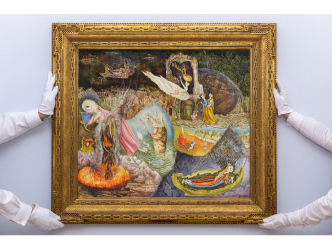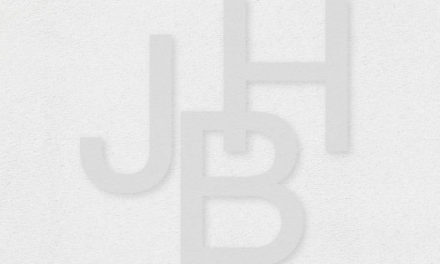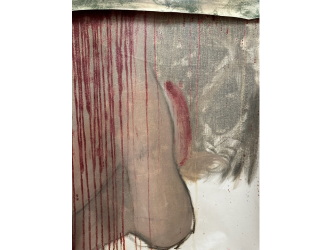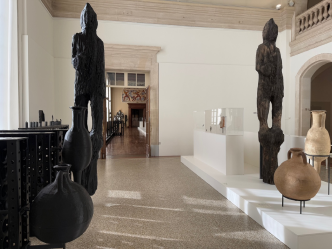What does it mean to be a political artist in this day and age?
I can already see readers deliberating whether to close their screens… But don’t go anywhere, this won’t be boring.
The most high profile political artist working today is Ai Weiwei. He posts, tweets, and ‘grams his experiences and even photos from newspaper articles without any added comments.
He has been the subject of political crackdowns, and was even incarcerated by Chinese authorities, an experience which, as an artist, he transformed into objects that incarnated his suffering (a CCTV camera fossilized in marble, reconstructions of scenes of police brutality that he underwent etc.) and which in this respect become relics.
Here then we have an example of an artist who wishes to be seen as a kind of god, scattering his traces among his disciples.
Ai Weiwei equally has a very interesting body of work dealing with the encounter between traditional Chinese culture and its Western counterpart. And as it happens, he has a show in Paris at the Max Hetzler Gallery from 3 September.
But there is another way to be a political artist. And if you’re born in Lebanon this is a categorisation you cannot escape.
When your country is at war and you live in the chaos for many years, curiously it gives way to highly finessed modes of expression. Joana Hadjithomas and Khalil Joreige are both natives of this stricken country (both born in 1969).
Don’t ask if they’re Christian or Muslim as they’ll refuse to answer the question.
They want the spectator’s gaze to move more freely, outside the usual divisions. Joana Hadjithomas and Khalil Joreige create films,photos, videos and installations.
Until 25 September the Jeu de Paume in Paris is dedicating a large exhibition to the duo which will travel to Sharjah in the United Arab Emirates from 12 March to 8 May, to Munich at the Haus der Kunst from 21 October to 17 January then to Spain’s Valencia Institute of Modern Art from 15 March to 3 September 2017.
That’s enough to say that this artist couple is global.
Asked about being a Lebanese artist nowadays Khalil Joreige responds:
The interest in Joreige-Hadjithomas lies in the fact that they chose to address arid subjects (politics, violence, globalisation, the power of images, memory, death) though back roads steeped in poetry. Joana and Khalil retranscribe and deliver small stories inside the big story.
For instance, one of the films being projected at Jeu de Paume is dedicated to the witness account by one of today’s most illustrious Lebanese artists, Etel Adnan (born in 1925) who currently has an exhibition at the Serpentine Gallery in London.
Joana and Etel’s families both come from the same town of Izmir in Turkey.
How do you approach the sadness of an uprooted family? In the suitcases filled with photos lurk dramas that one prefers not to know.
As Khalil explains:
In fact, the exhibition is deliberately jumbled: a perambulation through a body of work from the ’90s until the present day.
Eighteen postcards from 1968 and 1969 have been reprinted and are made freely available to the public. The visitor leaves with a piece of Beirut that has vanished. You can still find them for sale in Beirut but the landmarks that they depict were destroyed in the war.
The couple also created a series of elaborately documented works (film, objects, and even a carpet) that retell an insane project by the Lebanese state in the 1960s: to conquer space. It’s a colourful epic, which was abandoned after the Six Day War.
Khalil Joreige and Joana Hadjithomas are always occupying the in-between. They are filmmakers and visual artists. They are Lebanese but equally French. They talk about politics but above all about poetry. And they are two people: a couple who sign their works jointly.
By way of conclusion, Khalil reveals how to create à deux.
Bonus: A discussion about Lebanese rocket societey @ ArtBasel:




